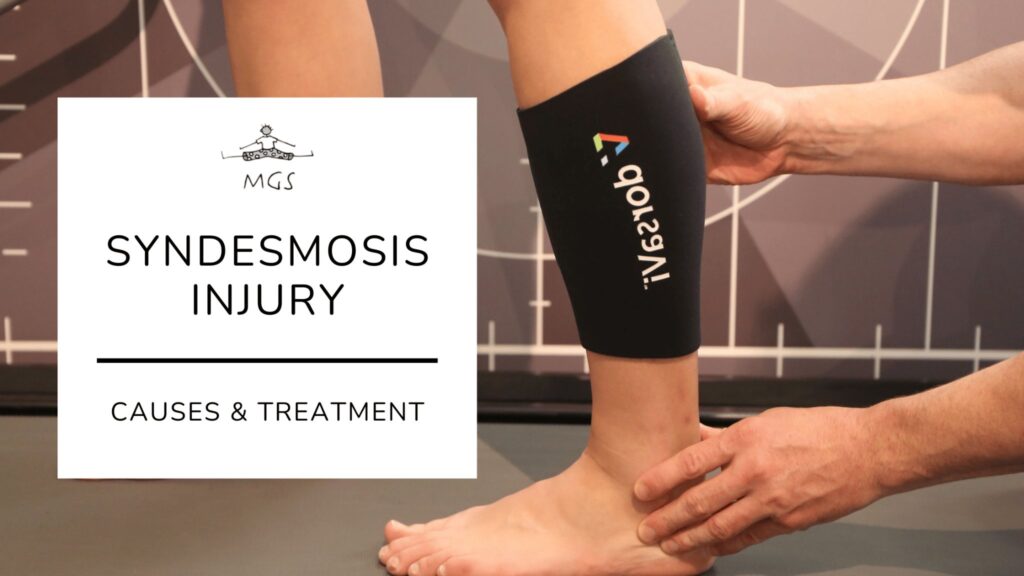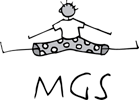Introduction
A syndesmosis injury – often called a high ankle sprain – occurs when the strong ligaments that hold your shin bones (the tibia and fibula) together are torn or overstretched. This type of sprain is less common than a typical ankle sprain, but it can be far more debilitating. The injury usually happens when your foot is forcefully twisted outward relative to your leg. Without proper care it may lead to long‑term pain and instability.
Key takeaways
- A syndesmosis injury damages the ligaments that join the tibia and fibula just above your ankle joint.
- Sports that involve sudden twisting or collisions – such as football, rugby, netball and skiing – are common causes.
- Symptoms typically include pain above the ankle, swelling up the leg, bruising and difficulty putting weight on the foot.
- Early physiotherapy is the quickest route to recovery; treatment often combines rest, bracing, manual therapy, specific strengthening and a gradual return to sport.
- Severe injuries may require surgery. Recovery time ranges from roughly 6‑8 weeks for mild sprains to several months for moderate or severe cases.
- Don’t ignore persistent ankle pain or a feeling of instability – seek a professional assessment.
Quick overview
A high ankle sprain affects the ligaments that form the syndesmosis joint, a small but crucial structure above your ankle. Unlike a typical ankle sprain, this injury often results from forceful twisting or contact and causes pain higher up the leg. Early physiotherapy helps control swelling, restore movement and prevent chronic instability. In more severe cases – particularly when a fracture is present – surgery may be needed to stabilise the bones.
Understanding your syndesmotic injury
The syndesmosis is a group of four ligaments that bind the lower ends of the tibia and fibula together. These ligaments keep the bones snugly aligned around the talus (your ankle bone) so that the ankle joint works smoothly. If a twisting force or heavy impact overstretches these ligaments, the bones can separate slightly and cause significant pain when you attempt to walk or run.
Common causes
Most syndesmosis injuries occur during sports that demand rapid changes in direction or involve heavy contact. Landing awkwardly from a jump, getting tackled with your foot planted or having your ski catch and twist your leg can all injure the syndesmosis. Athletes who play rugby, soccer, netball or ski are particularly at risk.
Symptoms and diagnosis
You may feel a sharp pain above the ankle rather than around the outside of the ankle like a usual sprain. Swelling and bruising often travel up the leg and weight‑bearing becomes very difficult. A physiotherapist will perform special stress tests (such as the squeeze test) to check for instability and may recommend an X‑ray or MRI to confirm the injury and rule out associated fractures.
Treatment and recovery
Management typically begins with rest, ice, compression and elevation to reduce swelling, followed by immobilisation in a boot or brace if the injury is moderate or severe. Once the acute phase settles, physiotherapy focuses on restoring ankle mobility, strengthening the muscles around the ankle and calf, and improving balance. Your physio will guide you through a graded return to running and sport. If the ligaments are badly torn or the bones have separated significantly, surgery may be required to hold the bones together while they heal. Recovery can range from six to eight weeks for minor sprains to three or four months for more significant injuries. Cases requiring surgery may take six months or longer.
When to seek help
If you experience persistent pain above your ankle, swelling that extends up your leg or a feeling of instability after an injury, don’t try to push through it. Early assessment by a physiotherapist is crucial to avoid long‑term problems. At MGS Physiotherapy we tailor your treatment to your specific injury and sporting goals so you can return to your activities safely and confidently.
CALL NOW TO BOOK YOUR APPOINTMENT

